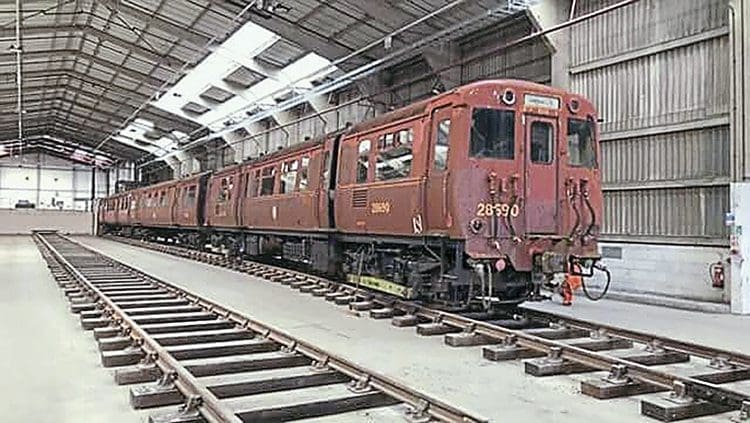Fifty years ago, steam trains disappeared from our national network, apparently never to return. At the time, several people who could were rushing around trying to buy locomotives out of service and save them not only from the scrapyard, but for the benefit and enjoyment of future generations. The late Morecambe GP Dr Peter Beet is one of the names that comes quickly to mind – through his actions several ‘Black Fives’ lived to fight another day.
Compare 1968 with a similar period of traction mass extinction – the end of Brunel’s broad gauge in 1892. Locomotives and rolling stock which ran on 7ft 0¼in gauge had no practical purpose after then, and so were cut up, with only North Star and Lord of the Isles retained to recall this important period in British railway history. Sadly, both were scrapped in 1906 due to pressure of space at Swindon Works, although the former was later reassembled as a static museum exhibit from components that had been saved.

You might be forgiven for thinking that the preservation era has provided solutions to the problem of the survival of historic artefacts – after all, who would scrap any steam locomotive, no matter its condition, today? Not so. How many last examples of electric rolling stock types have gone to the scrapyard, for instance, because nobody cared enough to preserve them, or offer a home for them?
Enjoy more Heritage Railway Magazine reading every month.
Click here to subscribe & save.
Therefore this month I cannot praise mega-enthusiast Jeremy Hosking enough for providing two EMU sets from the sadly-closed Electric Railway Museum at Coventry not only with survival space, but also undercover accommodation in the iconic former Hornby headquarters building at Margate.
Saving electric stock is a definitive acid test for the heritage railway sector. Yes, there are no electrified heritage lines on which they can be run, and while some of the smaller lines might be content to run EMUs as locomotive-hauled stock, their presence is by and large considered a waste of valuable siding space, in which they sit and rust away over the years through lack of volunteer interest.
Yet if our aim really is to preserve a representative selection of stock to reflect Britain’s proud railway past, surely we should be taking on board items from all aspects of its history, not just the ones deemed to have a second-hand use value, like steam and diesel locomotives. I have long compared this principle to the treatment of a classical symphony – do you bother only with the popular ‘bits’ that enthral the audiences at Last Night of the Proms, and cut out the ‘boring’ pieces inbetween, or do you cherish the work as a whole?
Brunel’s broad gauge accounted for a fair slice of Britain’s network in the 19th century, and the same principle applies to electric traction in the 20th and 21st. Yes, space is at a premium, but it should, indeed must, be found.
Coventry City Council threw away a golden opportunity when it forced the closure of the Electric Railway Museum, rather than investing in it as a tourist attraction. Thankfully, the stock from there has been saved, and thanks to Jeremy, two of its principal items now stand a chance of seeing service once again in future times. Yet more needs to be done.
I’ve said it before, but what about all that space that the Science Museum holds at Wroughton in Wiltshire? Surely it could accommodate a barn or two to house electric stock safe from the elements? And what are local authorities around the country doing to preserve examples of their modern traction heritage?
It is ironic that a building which earned its keep for decades selling electric trains – albeit in OO gauge – is now leading the way in conserving full-size examples. Top marks to Jeremy also for saving this superb structure which, while never rail connected, turned out products which inspired many a generation of schoolboy enthusiasts who graduated into today’s preservationists.
Robin Jones, Editor




